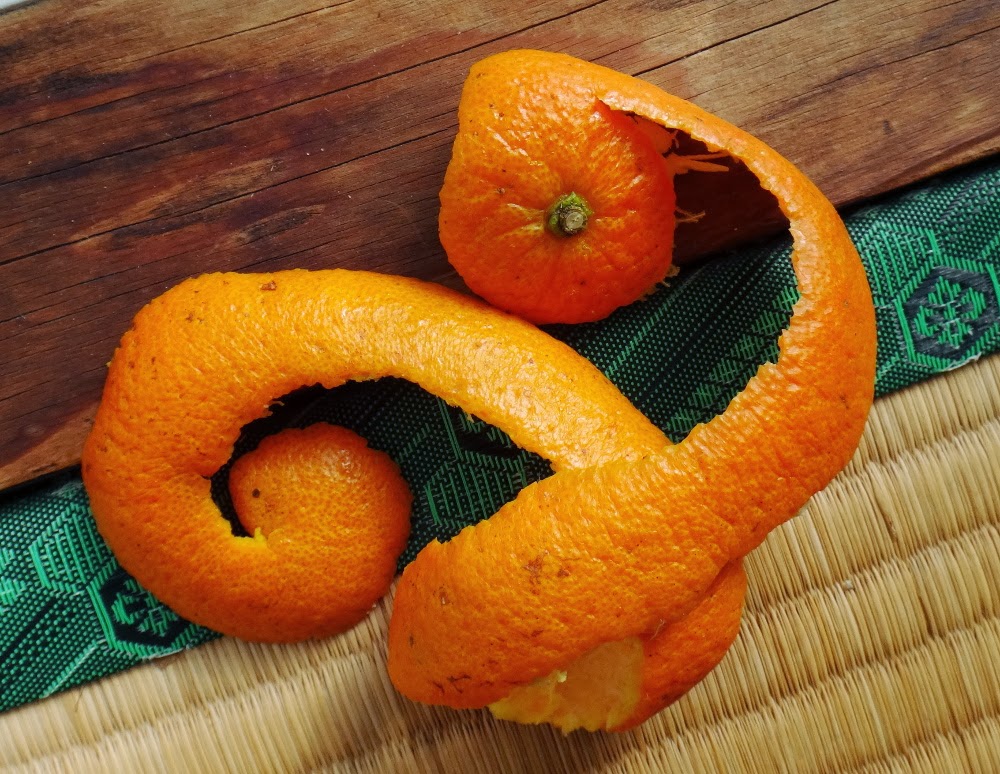I can remember my dad sitting in our backyard when I was growng up, eating oranges until supper time, a pile of rhinds slowly growing beside him. I've turned into my dad.
This year, the farmers have just celebrated the end of their harvests, and the tourists are scrambling for the last few available boxes of premium fruits. Fruits lacking in appearance will go into jams and juices. It seems like a good time to consider the question: What exactly is a tankan?
 |
| The last of the Tarumi #1's waiting for selection and shipment. |
But even within each strain, there is a lot of variation depending on growing conditions. I asked a grower at the end-of-harvest dinner about this and learned the following: Fruits growing near the bottom of the tree tend to have more nutrients, and therefore have more concentrated qualities, while those too near the top may be watery, or have a big, bubbly appearance. Later, while trying my hand at fruit QC, I learned that the vibrant orange color depends on exposure to direct sunlight, and those growing in the partial shade of a leaf or two develop a nice gold-to-orange two tone skin. Flavor and nutrition content also depend on exposure to sunlight.
I should also mention Yakushima's other big citrus export, ponkan tangerines, which have been grown in Yakushima for 90 years. If the Tarumi #1's aren't mellow enough for you, then ponkans, harvested in December through January may fit the bill.
And finally, how to eat a tankan: It's hard to go wrong, but the general opinion is that it's easiest to peel it from the bottom and work around in a circle like you would peel an apple.






No comments:
Post a Comment
Comments will be visible for five days before moderation. Please do not post a request for a hike as a comment